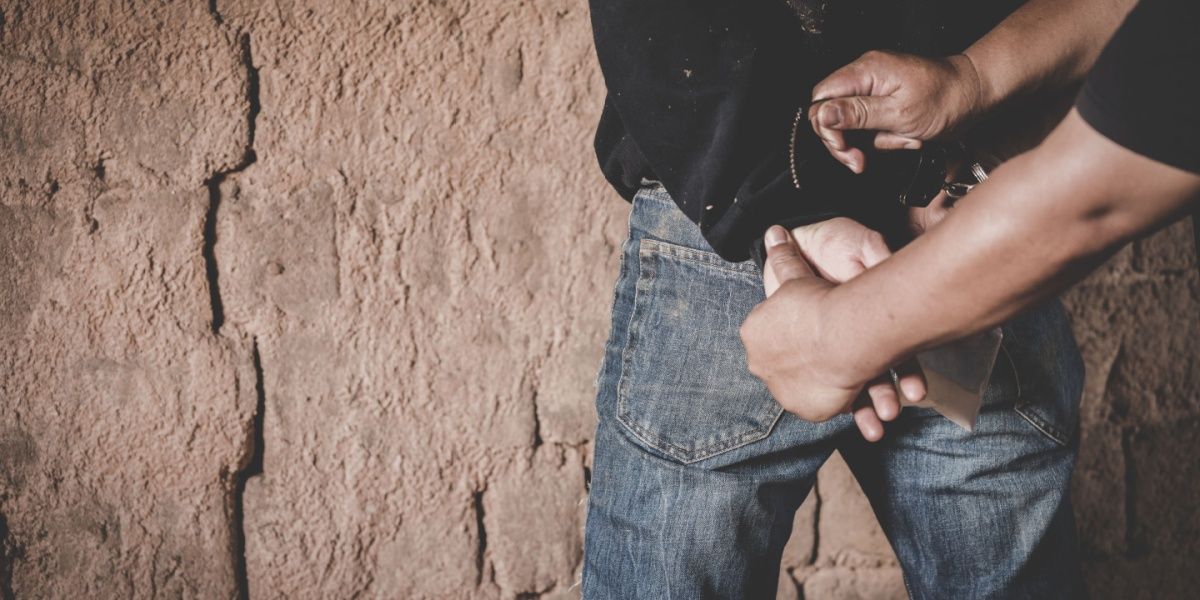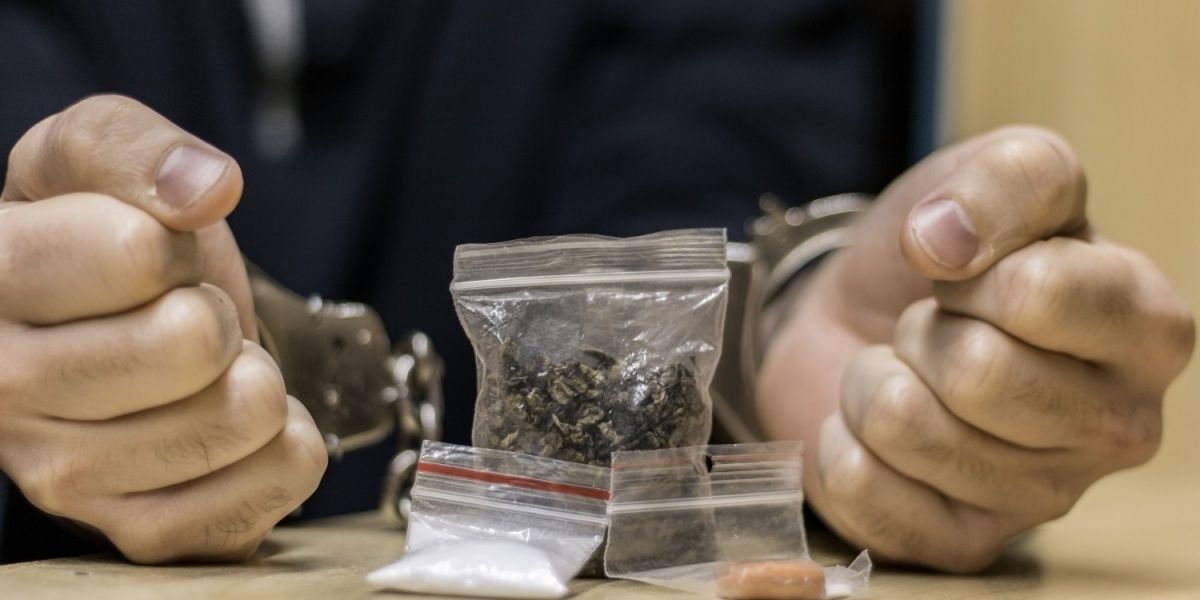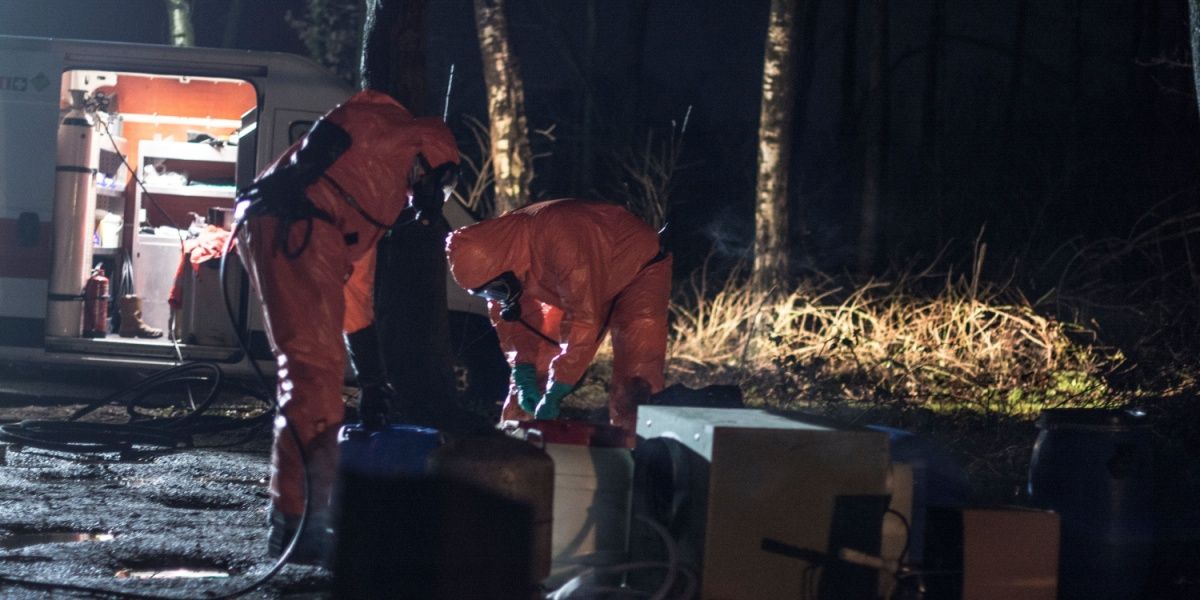Drug trafficking involves the production and transportation of illicit substances around the world and is a criminal offense. It is a multibillion-dollar industry, with links to several other criminal activities. Law enforcement agencies such as the Drug Enforcement Administration (DEA) and Homeland Security monitor, investigate, and detect such operations.
- Throughout the US, and globally, transporting illicit substances is a criminal offense incurring severe sentences.
- Fentanyl in North America mostly originates from chemicals bought in China and transported to Mexico where they are synthesized to manufacture fentanyl.
- Vulnerable people are often exploited in drug trafficking operations, combining the illegal transportation of humans with drug smuggling.

Drug trafficking definition
Drug trafficking describes the illegal production, growth, distribution, transportation, and sale of any drug listed as a controlled substance. [1]
The most commonly trafficked substances are reportedly heroin, cocaine, cannabis, and synthetic drugs including fentanyl and methamphetamine. [2]
Federal vs state trafficking laws
In general, most laws around drug-related crimes are similar on a federal and state level. The Controlled Substances Act defines the legal status of various substances and influences laws and prosecution of the manufacturing, possession, and distribution of these drugs. [3]
Drug-related crime occurring in one state, with a small quantity of drugs, or involving a small number of people may be likely to be prosecuted as a state crime. State laws vary, particularly around the possession of small quantities of marijuana, due to variations in the legal status of marijuana across the US. [4]
In contrast, large-scale operations involving significant amounts of drugs, people, and locations will typically involve federal charges. As such, drug trafficking cases will always be under federal jurisdiction. This will typically involve investigation by organizations such as Homeland Security and the DEA. [4][5]
Throughout the US, and globally, transporting illicit substances across borders to distribute locally is a criminal offense incurring severe sentences. [6]
Which countries traffic the most drugs into North America?
Most drugs brought illegally into North America are produced and manufactured in or transported through Mexico. [7]
Cocaine in North America mostly originates from Colombia and is transported through Mexico. [6]
Fentanyl in North America mostly originates from chemicals bought in China and transported to Mexico where they are synthesized to manufacture fentanyl. [8]
The ‘Golden Triangle’, Myanmar, Laos, and Thailand, has historically been known as the origin of most of the world’s heroin until production in this area declined in the early 2000s. Following this, Afghanistan became known as the leading producer of the global heroin and morphine market, reportedly supplying 80% of the world’s opium.[6][9]
In North America, the heroin supply has, since the 1990s, mostly originated from Colombia and Mexico. [9]
The link between drug and people trafficking
Reports show that many illegal drug trafficking operations are also involved in several other types of organized crime, including firearm distribution, money laundering, modern slavery, and human trafficking. [10]
The routes used to transport drugs around the world are also used for these illegal operations, including the transportation of people. In many cases, human trafficking leads to the imprisonment, slavery, and/or sexual assault and exploitation of vulnerable individuals. [10][11]
Vulnerable people are also exploited in drug trafficking operations, combining the illegal transportation of humans with drug smuggling. Criminals may attempt to increase their profits by using trafficked individuals as ‘mules’, transporting substances on or in their persons across borders. [11]
These organizations may recruit people with existing substance use disorders by promising and providing substances, exploiting those with these conditions. Alternatively, they may force vulnerable people to take drugs, creating or worsening addictions, and giving or withholding drugs as a reward or punishment to exert control. [12]
These individuals are often so heavily drugged that they cannot attempt escape or have become dependent on their trafficker to provide substances that they are coerced into engaging in criminal activity or are physically exploited. In many instances, substances are used by these victims as a coping strategy. [12]
A study published in 2014 found that of 107 female sex trafficking survivors, 84.3% used substances during their experience of trafficking, and 27.9% were forced to use drugs during this time. [13]
Drug trafficking statistics
Statistics from the US Sentencing Commission show that in 2023: [2]
- Almost 19,000 drug trafficking cases were reported
- Nearly half of these cases (47.5%) involved the trafficking of methamphetamine
- 5.3% of cases involved trafficking heroin
- 18.9% of cases involved trafficking cocaine
- 4.6% of cases involved trafficking crack cocaine
- 17.7% of cases involved trafficking fentanyl
- 3% of cases involved trafficking marijuana
- 97.2% of offenders involved in these cases were given prison sentences
- Fentanyl trafficking cases have been steadily increasing, from just over 1000 cases in 2019 to over 3350 cases in 2023
- Marijuana trafficking cases have decreased significantly in the last five years, most likely due to increasing legalization of marijuana in the US
Reports from US Customs and Border Protection show that in 2023: [14]
- During border seizures, fentanyl prevented from entering the US equated to a street value of $71.6 million
- Heroin seizures at US borders equated to a street value of $22.8 million
Penalties for drug trafficking
Penalties for drug trafficking typically include prison sentencing and fines. This varies depending on the type and amount of substances involved and whether the individual has any prior drug trafficking offenses.
According to the US Sentencing Commission, the average prison sentence for trafficking heroin, cocaine, crack cocaine, or fentanyl is 60-72 months, and for methamphetamine is 100 months. [2]
Schedule I and II substances
Trafficking Schedule I and II controlled substances, including 500-4999 grams of cocaine, 100-999 grams of heroin, 40-399 grams of fentanyl, and 5-49 grams of pure methamphetamine can incur the following penalties: [3]
- First offense: 5-40 years imprisonment. In the involvement of death or serious injury, 20 years to life imprisonment. A fine of up to $5 million for an individual and $25 million if not an individual.
- Second offense: 10 years to life imprisonment. If death or serious injury is involved, life imprisonment. A fine of up to $8 million for an individual and $50 million if not an individual.
Trafficking larger quantities of these substances, including 5 kgs or more of cocaine, 400 grams or more of fentanyl, 1kg or more of heroin, and 50 grams or more of pure methamphetamine can lead to the following penalties: [3]
- First offense: 10 years to life imprisonment. A fine of up to $10 million if an individual and $50 million if not.
- Second offense: 20 years to life imprisonment. A fine of up to $20 million if an individual and $75 million if not.
- Two or more offenses: Life imprisonment. Up to $20 million fine if an individual and $75 million if not.
Schedule III substances
Trafficking Schedule III substances can incur the following penalties: [3]
- First offense: Up to 10 years imprisonment. A fine of $500,000 for an individual and $2.5 million if not an individual.
- Second offense: Up to 20 years imprisonment. A fine of $1 million for an individual and $5 million if not.
Schedule IV substances
Trafficking Schedule IV substances can incur the following penalties: [3]
- First offense: Up to 5 years imprisonment. A fine of $250,000 for an individual and $1 million if not an individual.
- Second offense: Up to 10 years imprisonment. A fine of $500,000 for an individual and $2 million if not.
Schedule V substances
Trafficking Schedule V substances can incur the following penalties: [3]
- First offense: Up to 1 year imprisonment. A fine of $100,000 if an individual and $250,000 if not.
- Second offense: Up to 4 years imprisonment. A fine of $100,000 for an individual and $500,000 if not.
Trafficking 1000 kg or more of marijuana can incur the following penalties: [3]
- First offense: 10 years to life imprisonment. If death or serious injury is involved, 20 years to life. A fine of $10 million if an individual and $50 million if not.
- Second offense: 20 years to life imprisonment. Involvement of death or serious injury, life imprisonment. A fine of $20 million for an individual and $75 million if not.




